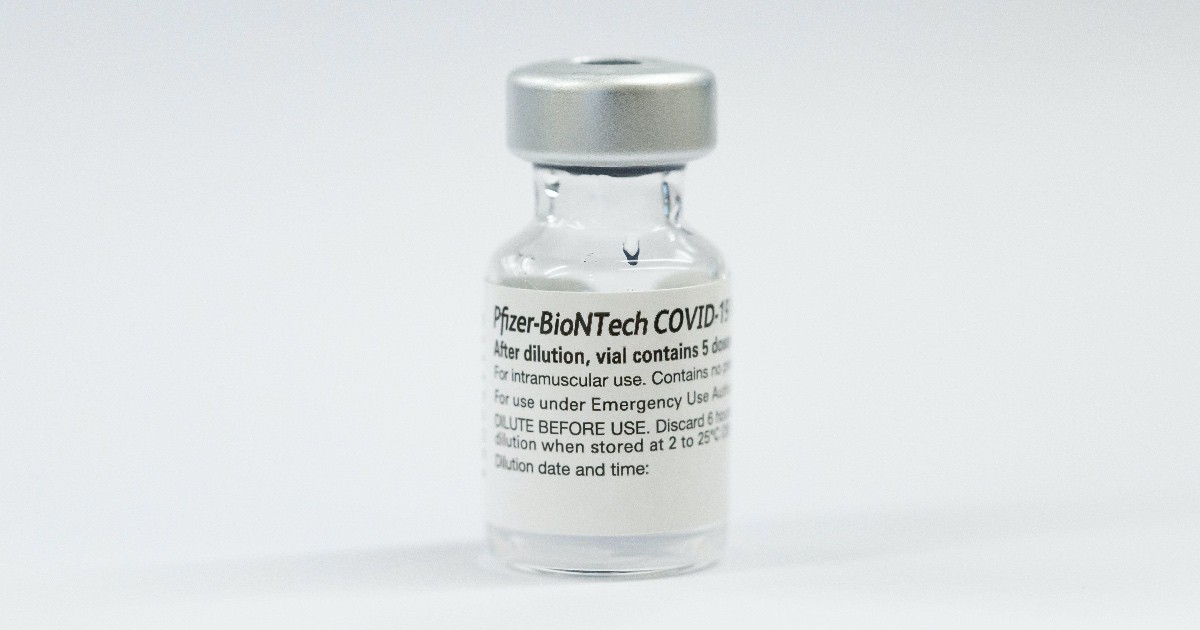The Pfizer vaccine isn’t 99% graphene oxide

14 July 2021
What was claimed
The Pfizer vaccine is 99% graphene oxide.
Our verdict
False. The MHRA has told Full Fact that this is ‘completely incorrect’.
There have been multiple claims made online which say that the Pfizer vaccine contains 99% graphene oxide, a substance which is derived from graphite. The claims originate from a Spanish study and have been circulating in English (across the UK and the US), in Spanish and in Portugese. They are not true.
Some of the claims highlight concerns about the toxicity of graphene oxide, while others suggest that graphene oxide may provide an explanation for the ‘magnetism’ that has been commonly claimed to be associated with the Covid-19 vaccines (this is false and we have fact checked this claim previously).
In addition to seeing posts shared on social media, Full Fact has also been asked about these claims by our own readers. Several users on social media have claimed graphene oxide in the vaccine is being used to poison people and create a mass genocide. This is not true, and there is no graphene oxide in the Pfizer vaccine.
Graphene oxide is a nanomaterial (a chemical substance or material that is at a very small scale, for example with an external dimension of 1-100nm) which is thought to be of important potential use for biomedicine. There are concerns, however, around toxicity and potential adverse effects.
There are modifications which are being explored, and Johns Hopkins infectious disease specialist Dr. Amesh Adalja previously told AP News that there has been research on potentially using graphene oxide in other vaccines, but the amounts would not be toxic to human cells.
The concern around the presence of graphene oxide in the Pfizer vaccine seem to be based on a Spanish study which says that on transmission electron microscopy (a microscopy technique which allows particularly fine details and structures to be seen), the solution created from a vial of the Pfizer vaccine takes a very similar form to graphene oxide.
Graphene oxide is not listed as an ingredient of the vaccine, and the Medical and Health product Regulatory Agency (MHRA) told Full Fact that these claims are “completely incorrect”.
A spokesperson for Pfizer also told Full Fact that “Graphene oxide is not used in the manufacture of the Pfizer-BioNTech Covid-19 vaccine”.
With regards to the Spanish study, there are a number of problems with the claims that it makes, and the way that these findings have been interpreted by some people on social media.
The claim that the Pfizer vaccine is largely made up of graphene oxide has been fact checked many times before.
Only one sample was tested and its provenance is unknown
Firstly, we have no way of verifying what the scientists actually looked at through electron microscopy. The paper says that the sample of Pfizer vaccine for testing was received by the testing laboratory from a courier and, although the sample was sealed, its provenance and traceability is unknown. The author says in the study limitations that these findings are from “one single sample” of Pfizer vaccine and therefore, “significant sampling of similar vials” is required in order to “draw conclusions that can be generalized”.
The study itself says it is not ‘conclusive evidence’
When referring to the images which compare electron microscopy of the Pfizer vaccine with images of microscopy of graphene oxide, the study says that they “represent a high similarity” but also says that this does not provide “definitive identification” or “conclusive evidence”.
Importantly, the document says that it is an interim report. It has not been published in a reputable scientific journal, or received peer review.
The University of Almeria has distanced itself
Thirdly, while the researcher who authors the paper reportedly works at the University of Almeria in Spain—a claim that has been used to add legitimacy when circulated online—the author clearly states that the results and conclusions of the report “do not imply any institutional position of the University of Almeria”.
The university has also publicly distanced itself from the paper on Twitter and in a released statement, saying that it is an “unofficial report by a university professor about an analysis of a sample of unknown origin with total lack of traceability”.
The university said it does not subscribe to this report.
This article is part of our work fact checking potentially false pictures, videos and stories on Facebook. You can read more about this—and find out how to report Facebook content—here. For the purposes of that scheme, we’ve rated this claim as false because the Pfizer vaccine is not 99% graphene oxide.

